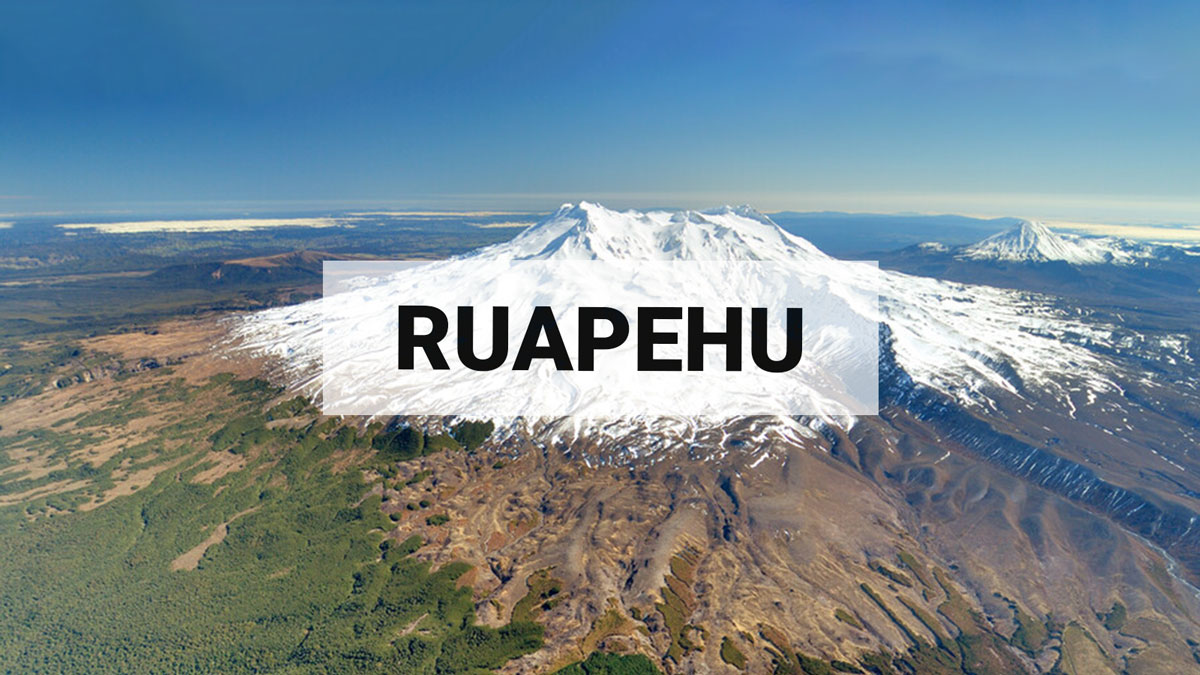
Crater Lake cooling, minor volcanic unrest continues at Mt Ruapehu. Volcanic Alert Level remains at 1.
Ruapehu’s Crater Lake is slowly cooling and is now 17°C. Heat flux is low while sulphur dioxide gas emissions continue. The Volcanic Alert Level remains at 1 and the Aviation Colour Code at Green.
Since our last update in February, temperatures at Te Wai ā-moe (Ruapehu Crater Lake) have hovered around 20 ºC but are now showing a slow decline to 17°C. Heat flux modelling indicates there is a continuous heat input of about 50 MW. Heat input typically ranges from around 30, to over 300 – 400 MW when the lake is hotter (over 35 °C).
Sulphur dioxide emissions measured by our continuous gas emission detectors continue to show low-level, continuous gas flux of around 100 – 150 tonnes per day. These observations are consistent with background activity at Ruapehu, with some minor input of volcanic gas from depth into the Crater Lake, keeping it warm.
The lake has not heated as much as is expected during a heating cycle, however, the measurable flow of gas through the lake suggests that vents remain open. Crater Lake water samples taken on 6 May 2025 show no departure from long-term trends.
We recently upgraded the data logger system at the outlet of the lake. A key addition is a multi-gas system to measure key volcanic gases at high rate. The lake level and temperature sensors have also been upgraded. This data can be seen here.
Since February volcanic tremor has remained low, reflecting the low heat input and gas flux from depth. We have detected some occasional small earthquakes beneath the summit which is a typical behaviour at Ruapehu.
Our recent observations are consistent with the ongoing, low-level volcanic unrest at Ruapehu and, therefore, the Volcanic Alert Level remains at 1 and __the Aviation Colour Code remains Green. __
More information:
Mt Ruapehu is an active volcano and has the potential to erupt with little or no warning when in a state of minor volcanic unrest.
The Volcanic Alert Level reflects the current level of volcanic unrest. The Volcanic Alert Level should not be used to forecast future activity.
Volcanic Alert Level 1 indicates the primary hazards are those expected during volcanic unrest: steam discharge, volcanic gas, earthquakes, landslides, and hydrothermal activity. While Volcanic Alert Level 1 is mostly associated with environmental hazards, potential for eruption hazards also exists and eruptions can still occur with little or no warning. Volcanic Alert Levels 3, 4 and 5 are reserved for eruptions with varying impact distances.
For information on access to the Mt Ruapehu area, please visit the Department of Conservation’s website on volcanic risk in Tongariro National Park and follow the DOC Tongariro Facebook page for further updates.
For information about responding to volcanic activity there are guidelines from the National Emergency Management Agency
GNS Science and its National Geohazards Monitoring Centre continue to closely monitor Mt Ruapehu for further changes.
Craig Miller
Duty Volcanologist
Media contact: 021 574 541 or media@gns.cri.nz
